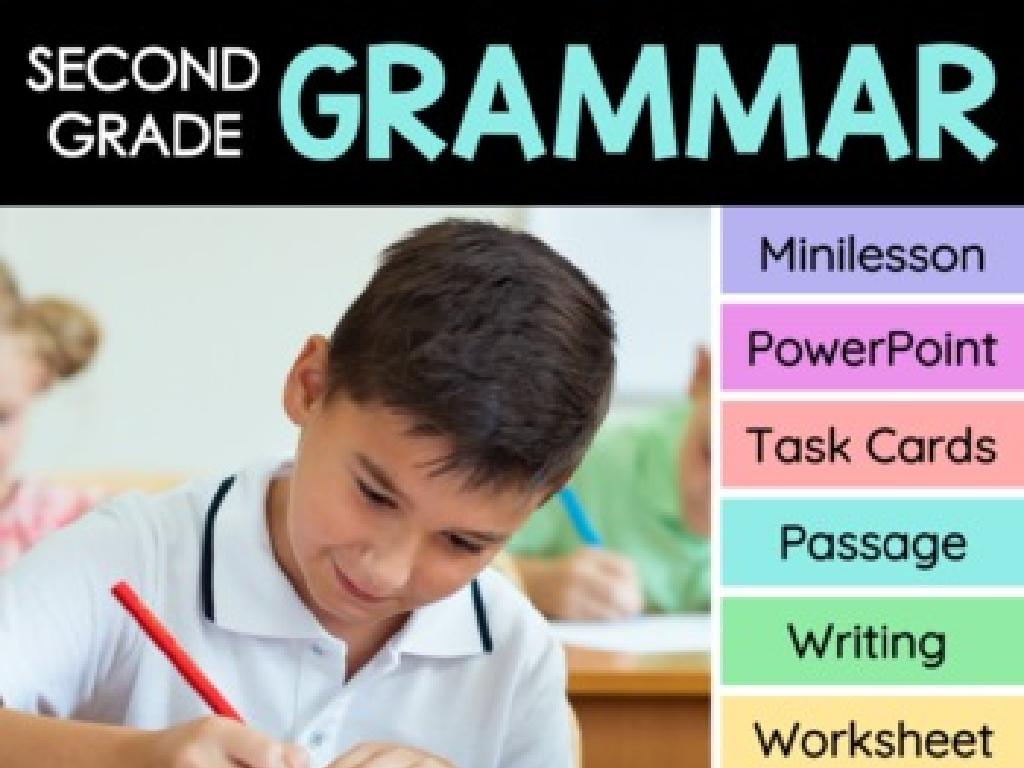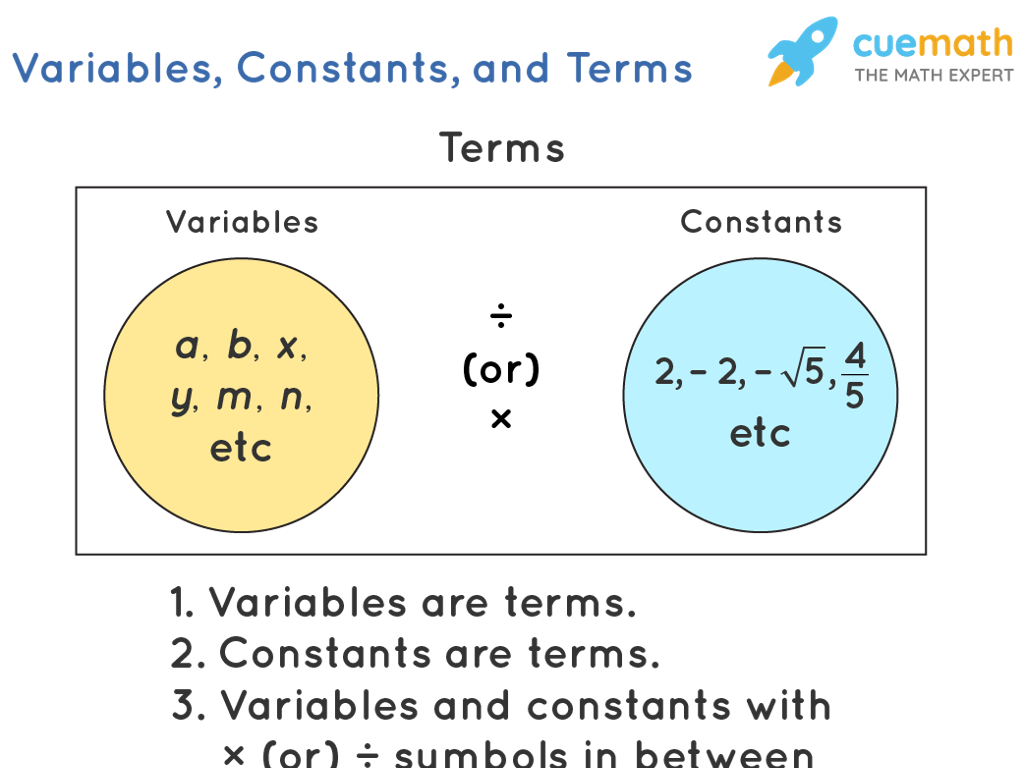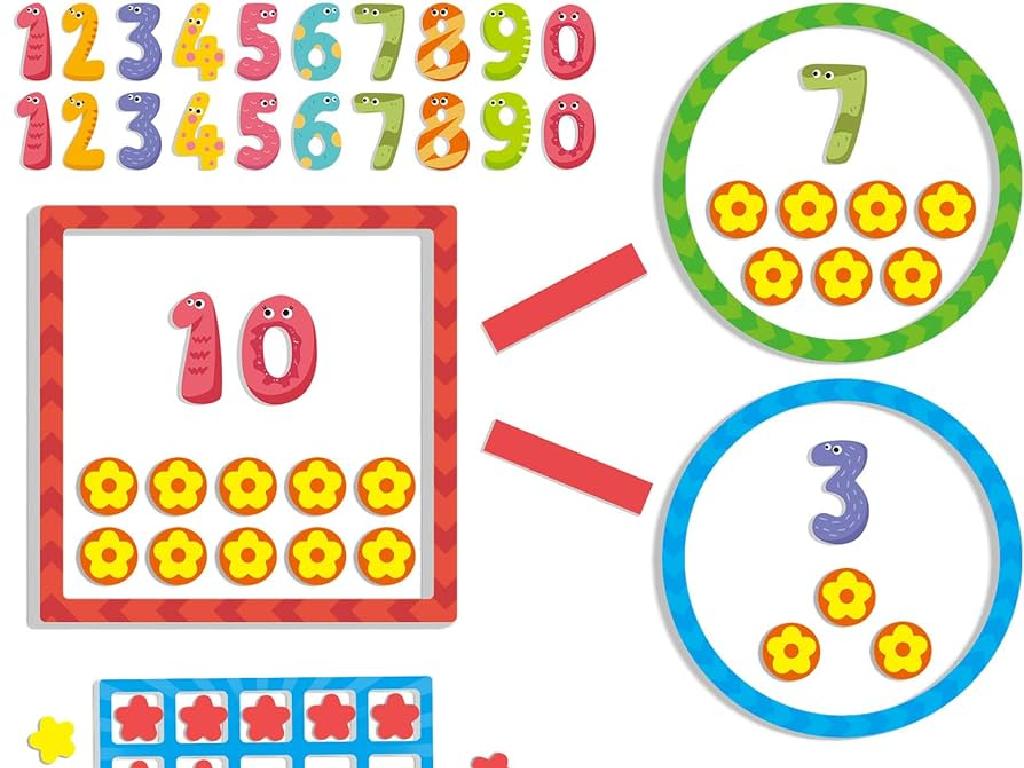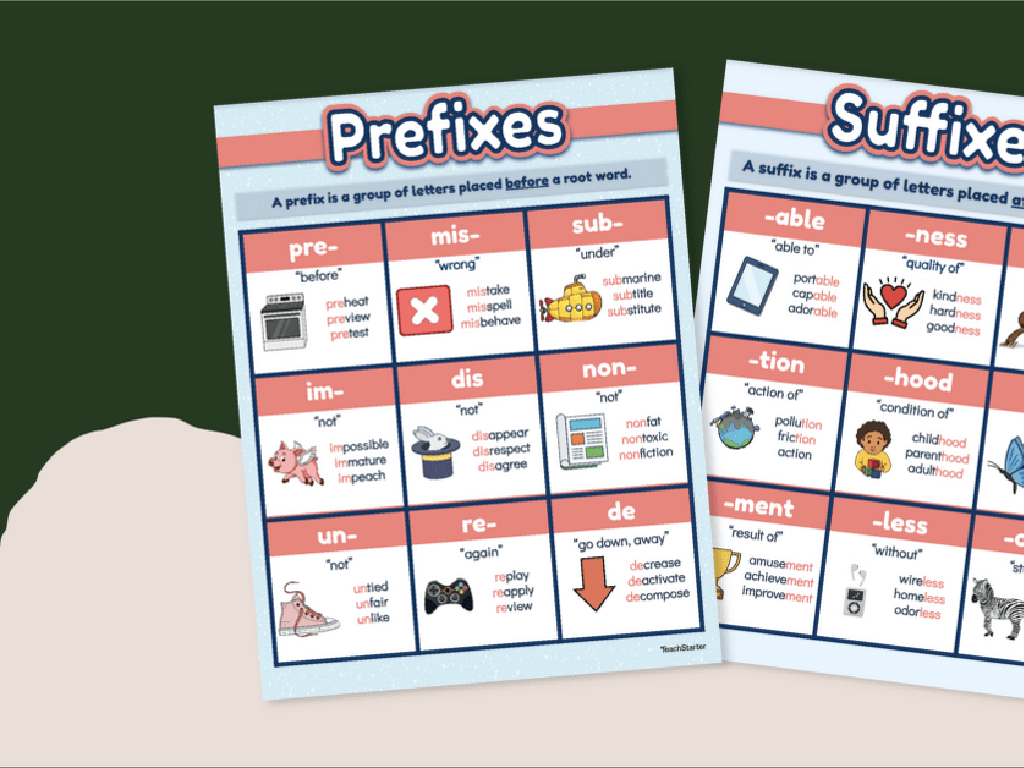Related Addition Facts
Subject: Math
Grade: Second grade
Topic: Properties
Please LOG IN to download the presentation. Access is available to registered users only.
View More Content
Welcome to Addition Facts!
– Learn about related addition facts
– Explore how numbers combine
– Numbers can be added in various orders to get the same result
– Become addition detectives
– Look for clues in numbers to solve addition problems
– Find patterns and connections
– Discover how changing the order of numbers doesn’t change the sum
|
Today’s lesson introduces students to the concept of related addition facts, which are groups of addition equations that are connected to each other. Encourage the students to think of addition as a way of bringing numbers together in different combinations. As ‘addition detectives,’ they will investigate how numbers can be rearranged in an equation without changing the total sum, demonstrating the commutative property of addition. For example, 3 + 2 = 5 is related to 2 + 3 = 5. Use simple and relatable examples to help them see the patterns. This understanding will help them with mental math and build a foundation for learning more complex math concepts.
Exploring Related Addition Facts
– What are related facts?
– Groups of additions with same numbers
– Example: 2 + 3 and 3 + 2
– Both equal 5, numbers are just switched
– Order of adding doesn’t matter
– This is called the commutative property
– It always equals the same sum
|
This slide introduces the concept of related addition facts, which are essential for understanding the commutative property of addition. The commutative property states that numbers can be added in any order without changing the sum. Use simple examples to illustrate this point, ensuring that the students can see the numbers are the same but their order is different. Emphasize that regardless of the order, the sum remains constant. Encourage students to come up with their own related addition facts and to recognize patterns in addition. This foundational understanding will help them with more complex math problems in the future.
Exploring Patterns in Addition
– Discovering addition patterns
– Changing number order
– Switching the places of numbers in an addition problem
– Same answer, different order
– Commutative Property
– The rule that says a + b = b + a
|
This slide is aimed at helping second-grade students recognize patterns in addition facts and understand the Commutative Property of Addition. Start by showing simple addition problems and then switch the order of the addends to demonstrate that the sum remains the same. For example, show that 2 + 3 equals 5 and so does 3 + 2. Explain that this is what mathematicians call the Commutative Property of Addition. Encourage students to try this with different numbers to see the pattern for themselves. This concept helps build a foundational understanding of addition and prepares students for more advanced mathematical concepts.
Let’s Practice Together: Related Addition Facts
– I’ll show numbers for addition facts
– Example: 4 and 1 make two facts
– 4 + 1 = 5 and 1 + 4 = 5 show related facts
– Your turn with 3 and 2
– Find the related addition facts
– What two facts can we make with 3 and 2?
|
This slide is an interactive class activity designed to help second-grade students understand and practice related addition facts. Start by explaining that related addition facts are two or more addition sentences that use the same numbers. Show the example with numbers 4 and 1, and solve it together with the class. Then, prompt the students with a new set of numbers, 3 and 2, and ask them to find the related addition facts. Encourage them to think about how the order of numbers in addition doesn’t change the sum. Possible activities include using manipulatives to visualize the concept, pairing students to find facts together, or creating a game where students come up to the board to write related facts for given numbers.
Using Objects to Understand Addition
– Use blocks for addition facts
– Visual learning with objects
– Example: 5 + 3 with blocks
– Count out 5 blocks, then add 3 more
– Example: 3 + 5 with blocks
– Count out 3 blocks, then add 5 more
|
This slide is aimed at helping second-grade students understand addition through visual and tactile learning. By using blocks or counters, students can physically manipulate objects to see how numbers combine to form sums. This concrete representation reinforces the concept that the order of addends does not affect the sum, which is a fundamental property of addition. Encourage students to count aloud as they add the blocks together. During the class, have the students perform these addition examples with their own sets of blocks, ensuring they understand that 5 + 3 and 3 + 5 result in the same number of blocks, which illustrates the commutative property of addition.
Addition Facts Game
– Listen to the number I say
– Find two numbers that sum to it
– Write the related addition facts
– For example, if I say ‘5’, you might write ‘2+3=5’ and ‘3+2=5’
– Share your facts with the class
|
This interactive game is designed to help second graders understand and practice related addition facts. Start by explaining that related addition facts are two or more addition sentences that are connected to each other because they use the same numbers. Then, call out a number and have the students find any two numbers that add up to it. Encourage them to write down all the possible addition facts for those numbers. For instance, if the number is 8, they could write ‘3+5=8’ and ‘5+3=8’. After they have written their facts, ask volunteers to share their answers with the class. This will help reinforce their understanding of addition facts and demonstrate how numbers can be combined in different ways to reach the same sum.
Class Activity: Addition Facts Chain
– Create an Addition Facts Chain
– Each link shows related facts
– Example: 2+3=5 and 3+2=5 are related
– Collaborate to build the chain
– Aim for the longest chain possible
|
This activity is designed to help students understand the concept of related addition facts, which are pairs of addition sentences that use the same numbers. For instance, 2+3=5 and 3+2=5. Students will work in groups to create paper chains, with each link representing a pair of related facts. Encourage them to find as many related facts as possible to make the chain long. This hands-on activity not only reinforces their understanding of addition facts but also promotes teamwork and collaboration. As a teacher, you can walk around the classroom to assist and ensure each student is participating. Prepare a few examples to show them before they start, and consider rewarding the group that creates the longest chain to motivate them.
Celebrating Addition Facts!
– Congratulations on learning addition!
– Numbers can switch, sum remains constant
– For example, 3 + 2 is the same as 2 + 3
– Practice makes perfect in addition
– You’re on your way to becoming experts!
|
This slide is meant to congratulate the students on their hard work learning about related addition facts. Emphasize the commutative property of addition, which means that the order in which numbers are added does not affect the sum. Encourage them to keep practicing with different numbers to become more confident in their addition skills. Use examples to illustrate the concept and provide a variety of practice problems for them to work on at home or in groups. Celebrate their progress and remind them that with consistent practice, they will become addition experts.






